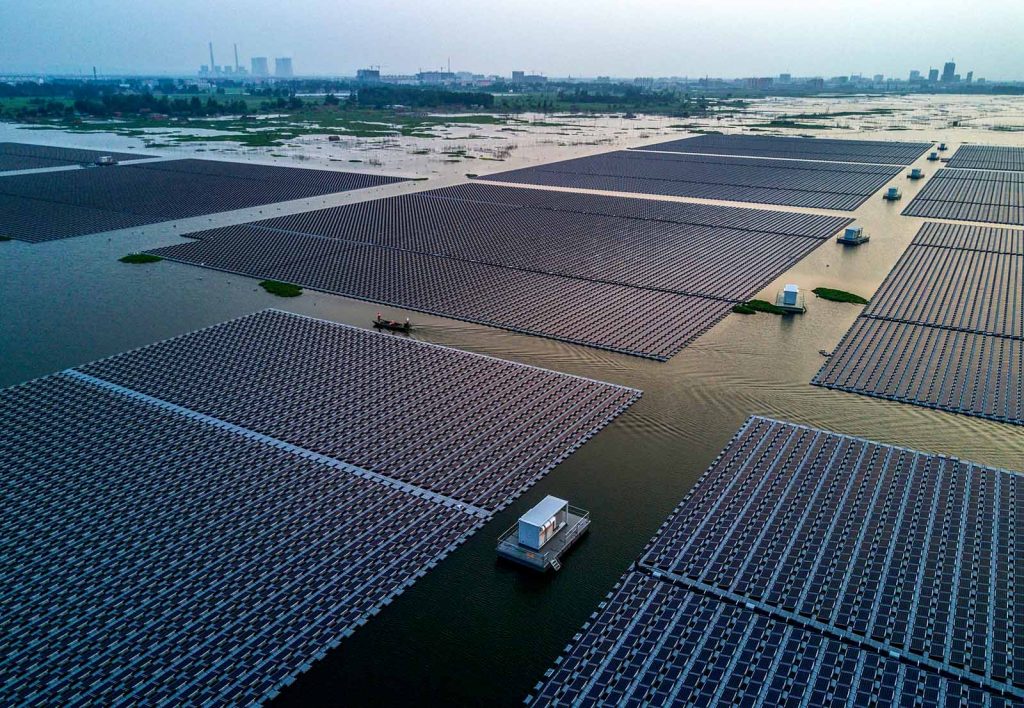Solar is the fastest-growing renewable source of energy on a global scale level. Many countries are determined to go solar instead of relying on fossil fuels, as they can be very unpredictable. While China is the leader in solar power energy, other countries are also pursuing that path.
So, where is the world’s largest power plant located? You can find out everything about the world’s largest power plants in this article. Also, here, on SolarDorm, you can learn more about solar energy!

Where Is the World’s Largest Solar Power Plant Located?
Bhadla Solar Park in India is the location of the largest solar plant in the world, with 2245 MW. An interesting fact is that out of the top ten largest solar parks in the world, five of them are located in India.
According to solar energy capacity, you can also find the largest power plants in China, Mexico, Egypt, and the United States.
The Largest Power Plant Worldwide
Where is the world’s largest power plant located? Rajasthan, India, is the home of the largest solar farm in the world to date.
The Bhadla Solar Park spans 14,000 acres and has a capacity of 2,25 GW. With over 10 million solar panels, this solar power plant is not only the largest one in India but in the whole world.
Located about 200 km away from Jodhpur and around 320 km from Jaipur, Badha is a region that is known as ‘unlivable’.
This is due to the extremely hot climate, mainly from 46-48 degrees celsius, warm winds, and sandy storms. That said, the largest power plant uses dry heat to produce renewable energy.
The manufacturers developed the power park in five phases. After it became operational at its full capacity, Bhadla Solar became the largest fully-commissioned PV project worldwide which required an investment of $1.3 billion.
This power plant works because it features photovoltaic panels that capture the sunlight and transform it into DC power.
Such solar farms take advantage of the sun and work as conventional power plants providing electricity that is now less costly than typical power generation.
More about the largest power plant in the world
India has a high energy demand, so the country requires clean and sustainable energy such as the ones provided by the power plants. This solar power plant project aims to produce 732,874 MWh of solar energy each year.
The government developed the solar project over the years, but they aim to increase its capacity even more.
It not only helps India minimize its dependence on fossil fuels but also encourages economic growth and helps in job creation. Hence, the government considers the best solar plant to provide electricity while being eco-friendly.
Related: Which Countries Produce Solar Panels?
About Solar Plants
The sun is the most abundant source of energy. Hence, many researchers are developing innovative technologies to use solar power plants and generate electricity.
Based on statistics, there is a growth in renewable energy capacity in all regions across the world, and it continues to expand at a very fast rate.
The top largest solar power plants
Aside from the Bhadla Solar Park in India, below are some of the world’s largest solar power plants.
- Huanghe Hydropower Hainan Solar Park (China) – 2200 MW
- Pavagada Solar Park (India) – 2050 MW
- Benban Solar Park (Egypt) – 1650 MW
- Tengger Desert Solar Park ( China) – 1547 MW
- Noor Abu Dhabi (United Arab Emirates) – 1,177 MW
Countries with the most solar capacity include China, the United States, Japan, Germany, and India. Among the nations that use the most solar energy are Australia, Germany, Japan, the Netherlands, and Belgium.
Also read: Which Country Produces the Most Solar Panels? Top Statistics
Conclusion
So, where is the world’s largest power plant located? If you have been wondering, you are now familiar with the countries building renewable energy capacity.
With such renewable solar projects, countries don’t have to rely on fossil fuels and other conventional energy sources.
The demand for solar systems is continuously rising in recent years and is expected to do so in the future as solar energy is slowly replacing conventional power generation.